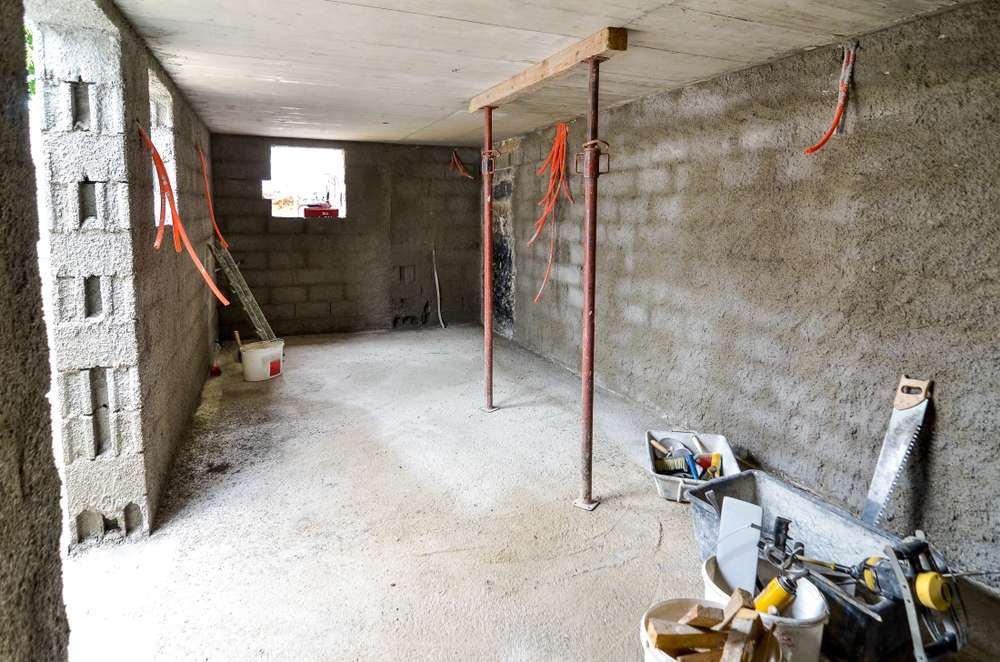Transforming Your Basement: A Complete Remodeling Guide
Basement remodeling offers homeowners a unique opportunity to expand their living space and increase property value. Whether you're looking to create a cozy family room, a home office, or an additional bedroom, understanding the fundamentals of basement renovation is essential for a successful project. This comprehensive guide walks you through the key considerations, from initial assessment to final touches.

Basement remodeling represents one of the most valuable home improvement projects, offering the potential to significantly increase your usable living space without expanding your home’s footprint. When executed properly, a basement renovation can transform an underutilized storage area into a functional, comfortable extension of your home while potentially boosting your property’s market value. However, successful basement remodeling requires careful planning, proper preparation, and attention to the unique challenges that below-grade spaces present.
Assessing Your Basement Space and Project Feasibility
Before diving into a basement remodeling project, it’s crucial to thoroughly evaluate your existing space. Start by checking for moisture issues—look for water stains, mold growth, or efflorescence (white mineral deposits) on walls and floors. These signs indicate potential water infiltration problems that must be addressed before proceeding with any cosmetic improvements. Measure your ceiling height, as most building codes require a minimum of 7 feet for habitable spaces, though requirements vary by location.
Evaluate the location of support columns, mechanical systems, and utilities. These elements will influence your layout options and may require creative solutions to incorporate into your design. Also assess the condition of your foundation walls and floor for cracks or unevenness that might need repair. Finally, consider access points—both for construction materials during the renovation and for comfortable everyday use once the project is complete.
Setting Clear Goals and Exploring Layout Options
Determining how you’ll use your remodeled basement should guide all subsequent decisions. Common basement conversions include family rooms, home theaters, guest suites, home offices, fitness areas, or multipurpose spaces. Each function has different requirements for lighting, sound insulation, plumbing, and electrical needs.
Once you’ve identified your primary goals, sketch several potential layouts that accommodate both your desires and the basement’s structural limitations. Consider creating zones for different activities if you’re planning a multipurpose space. Think about traffic flow and how people will move through the area. Open floor plans can make the space feel larger and allow natural light to penetrate deeper, while separate rooms offer privacy and noise control. Balance your ideal vision with practical considerations like egress requirements for bedrooms and access to mechanical systems for maintenance.
Navigating Home Improvement Permits and Regulations
Most basement remodeling projects require permits, especially if you’re adding bedrooms, bathrooms, or making structural changes. Contact your local building department early in the planning process to understand specific requirements. Common regulations include minimum ceiling heights, emergency egress windows for bedrooms, smoke detector placement, and electrical code compliance.
Some municipalities have special requirements for basement apartments if you’re creating a rental unit. These might include separate utilities, dedicated parking, or specific entrance configurations. Working with a contractor familiar with local codes can help navigate this process smoothly. Remember that unpermitted work can lead to complications when selling your home, insurance issues, or even mandated removal of improvements, making proper permitting an essential step despite the additional time and expense.
Addressing Moisture and Insulation Challenges
Moisture control is perhaps the most critical aspect of basement remodeling. Even seemingly dry basements can develop moisture problems if not properly managed. Begin with exterior solutions like proper grading, functioning gutters, and downspouts that direct water away from your foundation. Consider installing or upgrading your foundation drainage system if necessary.
For interior moisture management, apply waterproofing sealants to concrete surfaces and install a vapor barrier before framing walls. Choose moisture-resistant materials throughout your basement, including mold-resistant drywall, waterproof flooring options, and appropriate insulation types. Proper insulation not only improves energy efficiency but also helps prevent condensation. Foam board insulation applied directly to foundation walls before framing provides excellent thermal resistance and moisture protection. Additionally, consider installing a dehumidifier system to maintain optimal humidity levels year-round.
Selecting Appropriate Materials for Below-Grade Spaces
Basement environments demand specialized materials that can withstand potential moisture issues and temperature fluctuations. For flooring, consider options like luxury vinyl plank, engineered wood, ceramic tile, or specially designed basement carpet systems with moisture-resistant backing. Avoid solid hardwood, which can warp in basement conditions.
When framing walls, use pressure-treated lumber for bottom plates and consider metal studs in areas with higher moisture risk. Insulate exterior walls with closed-cell foam insulation or rigid foam board to create a thermal and moisture barrier. For ceilings, consider drop ceiling systems that allow access to plumbing and electrical systems or drywall with access panels at critical junctions. Select paints with added mildew resistance and ensure all wood components are properly sealed or treated to resist moisture damage.
Practical Lighting and Mechanical Considerations
Basements typically lack natural light, making thoughtful lighting design essential. Create a layered lighting plan incorporating ambient, task, and accent lighting. Recessed lighting works well in areas with limited ceiling height, while track lighting offers flexibility. If possible, enlarge or add windows, especially egress windows that can significantly improve natural light while meeting safety requirements.
Mechanical considerations include proper heating and cooling extensions from your existing HVAC system or installation of separate climate control options like ductless mini-splits. Ensure adequate ventilation to prevent stale air and moisture buildup. For plumbing, consider installing a backflow prevention system if adding bathroom facilities. If your basement doesn’t already have one, a sump pump with battery backup provides essential protection against flooding. Plan electrical outlets and circuits according to how you’ll use each area, ensuring sufficient power for entertainment systems, office equipment, or workshop tools.
Transforming your basement requires careful planning and execution, but the rewards are substantial. A well-designed basement remodel not only adds valuable living space to your home but can also provide a significant return on investment when done correctly. By thoroughly assessing your space, setting clear goals, addressing moisture concerns, and selecting appropriate materials and systems, you can create a comfortable, functional area that serves your family’s needs for years to come. Remember that while DIY approaches are possible for some aspects, consulting with professionals for structural, electrical, and plumbing work ensures safety and code compliance, ultimately protecting your investment in your home’s newest living space.






